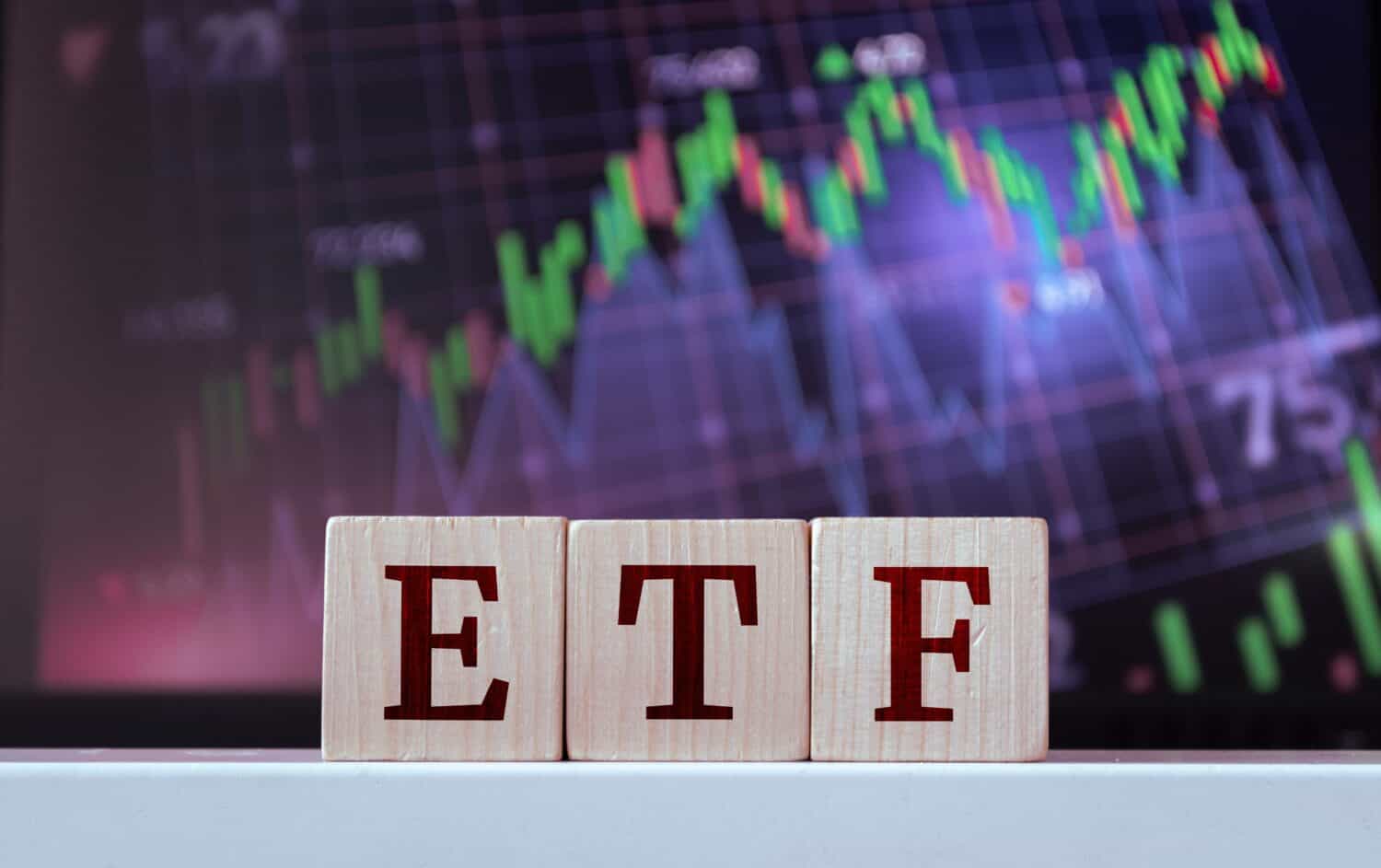Investing
Want $10 Million in Retirement? 1 Easy ETF to Buy and Hold for Decades.

Published:

Vanguard Funds is one of the largest mutual fund and ETF financial firms in the world. Vanguard was founded by Jack Bogle, who is considered “the father of index investing”. Bogle has been a longtime proponent of low-cost, passive investing over the long haul to gain the benefits of compounding gains. His long-term view “tortoise” approach towards investing is the polar opposite of the rapid trading meme stock ethos that has been popularized by Robinhood and other app-based platforms.
Surprisingly, Bogle’s hands-off approach towards investing has garnered a loyal and active following on Reddit and social media among Millennials and Gen-Z. Proudly calling themselves “Bogleheads”, they espouse using Bogle’s approach in conjunction with F.I.R.E. (Financial Independence Retire Early) strategies. These are aggressive retirement savings and focused thrift habits that are meant to establish and grow sizable retirement nest eggs years, and in some cases, over a decade before average retirement age. Building retirement nest eggs to $3 million by age 35-40 is not unheard of, and is in fact, becoming more common. This holds especially true for those who work in the tech industry, where high flying, publicly traded stock, stock options, and warrants have become ubiquitous as part of W-2 employee compensation.
Perhaps due to the intense time focus on maximizing earnings while aggressively socking away matching employer funds into their 401-K accounts, the majority of F.I.R.E. strategy adherents have turned to the convenience of ETF funds to grow their retirement and non-retirement savings. The relative reliability and diversification safety offered by ETFs seem tailor made for investors who lack the time to do extensive market research and are busily amassing income to invest into various tax-deferred and post-tax growth targeted accounts.
When it comes to growth, a credo phrase that has become almost a mantra among F.I.R.E. fans on Reddit is: “VTI and Chill”. The sentiment refers to the popularity of Vanguard’s VTI as the best default growth ETF to buy if you have to pick only one.

The Vanguard Total Stock Market ETF (NYSE: VTI) is an index exchange traded fund that tracks the entire US equity market via its benchmark, the CRSP (Center for Research in Security Prices) US Total Market Index. It is market cap weighted, so the largest publicly traded companies comprise greater allocation size within the index.
As of the beginning of December, 2024, VTI held 3,624 stocks. The ETF carries a very low expense ratio of 0.03%, compared to its peers’ 0.77% fee. VTI also has internal policies to prevent accumulating more than 5% of the portfolio assets into a single issuer’s stocks, unless required to approximate any composition change in the CRSP US Total Market Index.
VTI’s 10-year cumulative return calculates at 224.70%. This averages out to 12.5% annually. The year to date total return is 23.81%.
Other VTI characteristics include the following, as of December, 2024:
Size: Median Market Cap is $192.7 billion. Total net AUM is $1.84 trillion.
Unsurprisingly, the Magnificent 7 (Apple, Nvidia, Microsoft, Amazon, Meta (Facebook), Alphabet Class A (Google), and Tesla are the top largest stock positions held in the VTI portfolio, in that order. Rounding out the top 10 are Berkshire Hathaway, Alphabet Class C, and Broadcom.
VTI pays out dividend distributions on a quarterly basis. The last 6 quarters have ranged from 79.8 cents per share to 1 dollar per share. The yield is 1.25%

While it’s probably a good idea to have a mix of ETFs, the premise of “VTI and Chill” is predicated on VTI being the best if choosing only one. How would that work? The following scenario is based on a 20-year projection for a F.I.R.E. adherent who has already accumulated $1.25 million and has the ability to contribute $500 weekly from a well paying annual salary of roughly $200K, as per many who work in the tech industry, or who own their own businesses. The calculation also factors nominal inflation and taxes into the scenario. A free Return on Investment calculator is offered by numerous financial institutions on their websites. Investors of all ages and principal amount sizes can benefit from their use to help their final selections for ETFs and mutual funds under consideration.
| Term | 20 years |
|---|---|
| Rate of Return | 12% |
| Initial Investment | $1,250,000 |
| Weekly Investment | $500 |
| Expected Inflation | 1.8% |
| Taxes | 15% |
| Total Return | $10,321,629 |
From the added capital above the base $3 million, the following totals include:
| Compound Interest | $5,471,220 |
| Simple Interest | $3,080,409 |
| Invested Capital | $1,770,000 |
For those practicing F.I.R.E. from a humbler starting point, VTI can still deliver impressive returns with a simple “VTI and Chill” approach. Take for example, a younger person, perhaps still under 40, who has $500,000 to start, mostly from company stock that is still hot from its IPO. Going out to 20 years with $375 weekly contribution can still grow the nest egg to over $4.6 million.
| Term | 20 years |
|---|---|
| Rate of Return | 12% |
| Initial Investment | $500,000 |
| Weekly Investment | $375.00 |
| Expected Inflation | 1.8% |
| Taxes | 15% |
| Total Return | $4,689,043 |
The Following totals include:
| Compound Interest | $2,381,236 |
| Simple Interest | $1,427,807 |
| Invested Capital | $890,000 |
For those who want to see how VTI might work for a Boglehead 30-year duration for a middle class employee from other industries, a projection scenario based on a $400,000 principal investment and a $300 weekly contribution can compound and reach over $10 million.
| Term | 30 years |
|---|---|
| Rate of Return | 12% |
| Initial Investment | $400,000 |
| Weekly Investment | $300 |
| Expected Inflation | 1.8% |
| Taxes | 15% |
| Total Return | $10,171,923 |
With the following breakdown:
| Compound Interest | $7,363.874 |
| Simple Interest | $1,940,048 |
| Invested Capital | $868,000 |

The Vanguard Total Stock Market ETF has an over 20 year track record that has successfully navigated the stock market through the lows of the 2008 subprime mortgage bank meltdown and through the highs of the Dow 44,000 stratospheric levels. It has proven resilient and reliable. Due to its market cap weighted selection process and diversification from over 3,600 stocks, it has inherent enough risk mitigation to continue to thrive even if the technology sector faces a perceived bubble selloff or a bearish trend.
Nevertheless, the rather large position in Berkshire Hathaway is a good reference indicator of the types of non-tech stocks that will still contribute to VTI for years to come, so “VTI and Chill” may very well become a mantra for the next generation as well as the current one, especially for those who continue it for a full 30 year term.
Thank you for reading! Have some feedback for us?
Contact the 24/7 Wall St. editorial team.